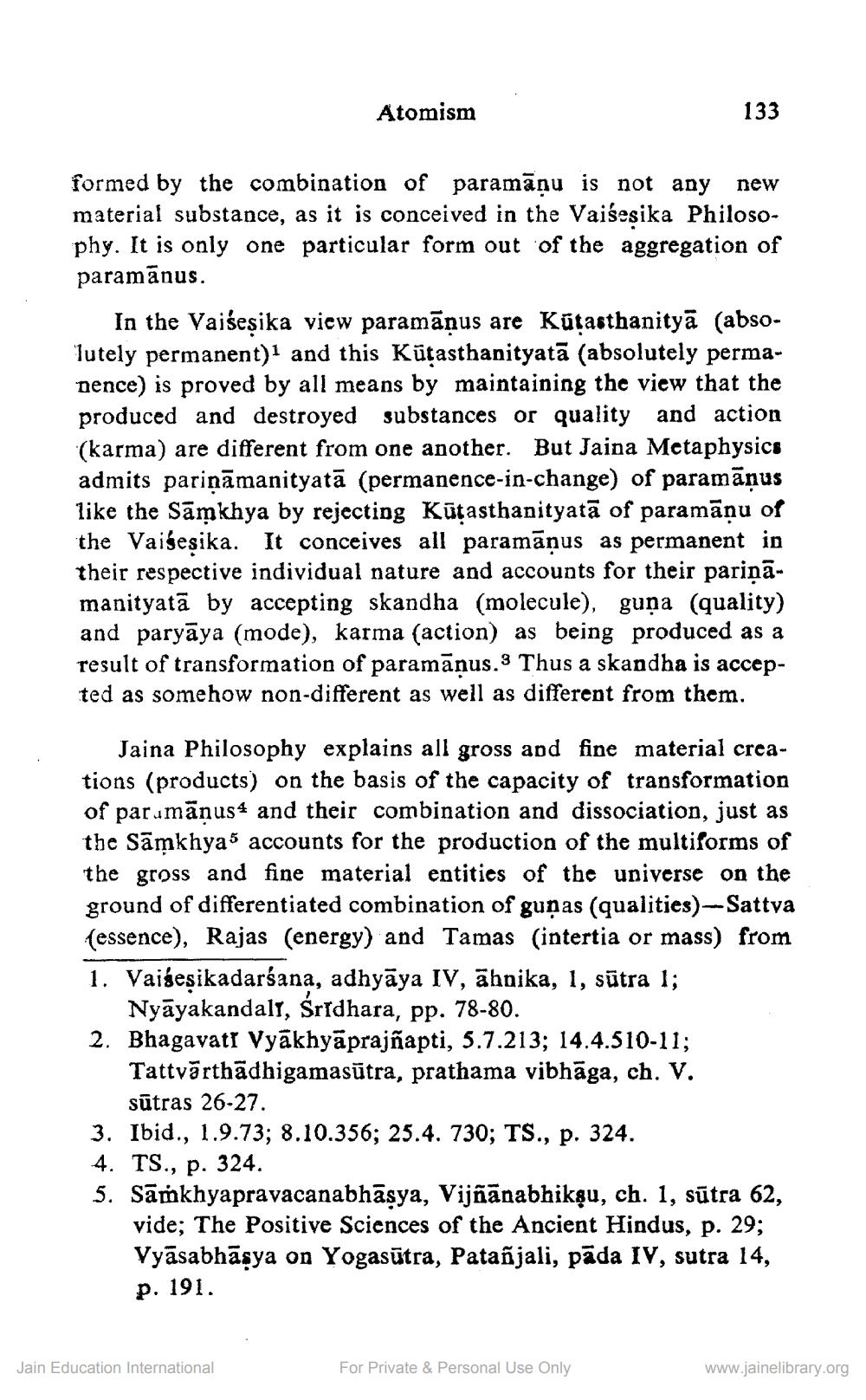________________
Atomism
133
formed by the combination of paramāņu is not any new material substance, as it is conceived in the Vaiśesika Philosophy. It is only one particular form out of the aggregation of paramānus.
In the Vaiseșika view paramāņus are Kütasthanityā (absolutely permanent)1 and this Kūțasthanityatā (absolutely permanence) is proved by all means by maintaining the view that the produced and destroyed substances or quality and action (karma) are different from one another. But Jaina Metaphysics admits parināmanityatā (permanence-in-change) of paramāņus like the Sāmkhya by rejecting Kūtasthanityatā of paramāņu of the Vaiseşika. It conceives all paramāņus as permanent in their respective individual nature and accounts for their pariņā. manityatā by accepting skandha (molecule), guņa (quality) and paryāya (mode), karma (action) as being produced as a result of transformation of paramānus. Thus a skandha is accepted as somehow non-different as well as different from them.
Jaina Philosophy explains all gross aod fine material creations (products) on the basis of the capacity of transformation of parumānus4 and their combination and dissociation, just as the Sāmkhyas accounts for the production of the multiforms of the gross and fine material entities of the universe on the ground of differentiated combination of gupas (qualities)-Sattya (essence), Rajas (energy) and Tamas (intertia or mass) from 1. Vaisesikadarśana, adhyāya IV, āhnika, 1, sūtra 1;
Nyāyakandall, ŚrIdhara, pp. 78-80. 2. Bhagavati Vyākhyāprajñapti, 5.7.213; 14.4.510-11;
Tattvārthādhigamasutra, prathama vibhāga, ch. V.
sūtras 26-27. 3. Ibid., 1.9.73; 8.10.356; 25.4. 730; TS., p. 324. 4. TS., p. 324. 5. Sāṁkhyapravacanabhāsya, Vijñānabhikgu, ch. 1, sūtra 62,
vide; The Positive Sciences of the Ancient Hindus, p. 29; Vyāsabhāsya on Yogasūtra, Patañjali, pāda IV, sutra 14, p. 191.
Jain Education International
For Private & Personal Use Only
www.jainelibrary.org




